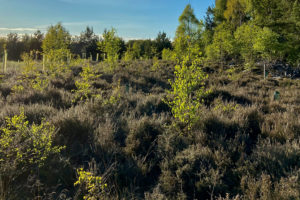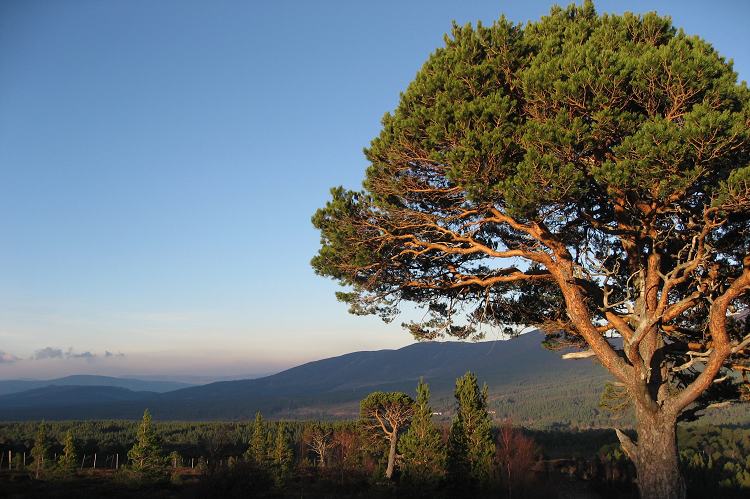Future Woodlands Fund Launched – (FWN36 Spring 2021)
20 May 2021New pilot programme will offer additional funding for creating native woodlands
What is the Future Woodlands Fund?
The Future Woodlands Fund (FWF) offers landowners in Scotland a simple and low risk way to plant or regenerate native trees providing free advice and financial incentives. The fund will work alongside the Scottish Government’s Forestry Grant Scheme (FGS).
The FWF will cover the costs of developing applications to both the FGS and the Woodland Carbon Code. Incentive payments for up to 20 years will be offered in return for verified carbon from the new woodlands. The FWF is being designed to help landowners with cash flow and financial security in order to encourage new woodland creation.
Financial Incentives for land managers are:
- Full costs of preparing a FGS application and a Woodland Carbon Code Project Design Document.
- Bridging loans for scheme implementation (subject to availability).
- Area payments of £100/ha per annum for 20 years.
The FWF is being delivered with £2m financial support from bp and will pilot an incentive-based approach aimed at encouraging the establishment of new native woodland and the restoration of ‘ghost’ woodlands, degraded former native woodlands that have high ecological potential.
There are three guiding principles for this fund:
- Climate change – adaptation and mitigation
- Wildlife – ecosystem protection, enhancement and resilience
- People – partnership working and collaborations that deliver social benefits
The pilot programme is being run by Future Woodlands Scotland (FWS). If successful, They aim to develop an ongoing scheme with significantly increased financial investment from bp and potentially other corporate partners.
How will it work?
The FWF will operate over a three-year period with application rounds in 2021 and 2022. Early applications are advised.
The three aspects of the financial incentives are:
All schemes will be registered and validated in the UK Woodland Carbon Code by FWS at no cost to the land manager, who will assign the woodland carbon to bp in return for the financial incentives.
Successful applicants will be required to sign a 55-year legal agreement to maintain the woodland and ensure the carbon sequestration is delivered.
bp will use the carbon to support projects and partnerships that contribute to reducing Scotland’s carbon footprint. The carbon will not be used to offset bp’s own emissions.
Who can apply?
Essential Criteria – applications must meet all of these to be eligible for the FWF:
- The application must be for native woodland establishment or restoration of formerly wooded sites.
- The scheme must be a minimum size of 3ha and maximum of 100ha.
- This must be a new scheme.
- The land must be registered for Rural Payments with the Scottish Government.
- The planting must not be a legal requirement (for example as a condition of planning consent, or restocking a harvested woodland).
- The scheme must be eligible for the Woodland Carbon Code and meet the Code’s additionality criteria.
- The scheme must be eligible for the Forestry Grant Scheme.
- The scheme must meet one or more of the Supplementary Criteria below.
- The applicant must be prepared to sign a FWS agreement.
Notes:
- For restoration the site must be less than 20% canopy cover.
- Size exceptions may be made for high-quality schemes.
- Existing Forestry Grant scheme applications that are in progress but not submitted are eligible.
- See the Woodland Carbon Code website for information on legal requirements and additionality.
Supplementary Criteria
These are scored criteria that will be used to assess quality and to rank/prioritise projects
Nature Based Solutions for climate change
- Improve ecological and habitat robustness – especially woodland habitat networks and connectivity.
- Increase carbon stores through halting degradation and loss of native woodland.
- Contribute to catchment scale river quality and natural flood management.
Woodland Expansion:
- Be located within one or more identified target areas for woodland expansion and conservation.
- Deliver objectives in regional or local woodland strategies (including National Park woodland strategies).
- Contribute to a collaborative or landscape scale projects.
Support for farmers:
- Help farmers to reduce emissions and adapt practices to tackle climate change.
- Integrate woodlands with farming.
Provision of Social Benefits:
- Promote and offering opportunities for community and corporate engagement
- Offer future opportunities for recreation, amenity and landscape
How can I apply for funding?
You can apply online. Register on the Future Woodlands Scotland website to start your application. You’ll need to:
- provide a map showing the extent of area where you want to create the woodland
- describe your objectives for the new woodland
- state why you are applying for FWF assistance
- provide any other relevant information that will support your application.
Bear in mind the supplementary criteria, listed above, that will be used to assess and rank applications. Your application must fulfil at least one of these criteria, and will have a better chance of success if it fulfils more than one. Check which of the criteria are relevant to your plans and make sure you demonstrate clearly how your proposal fulfils them.
The scheme has not yet opened to applications for restoring ghost woodlands. However, if you own or manage a ghost woodland in that could benefit from this potential funding stream, you can express your interest on the FWS website now.
This article has been published in the Spring 2021 edition of the Farm Woodland News. Download a copy to access all articles. Subscribe to receive newly published editions via email by using the form here.
All photo credits & copyrights: Fiona Chalmers
Sign up to the FAS newsletter
Receive updates on news, events and publications from Scotland’s Farm Advisory Service


